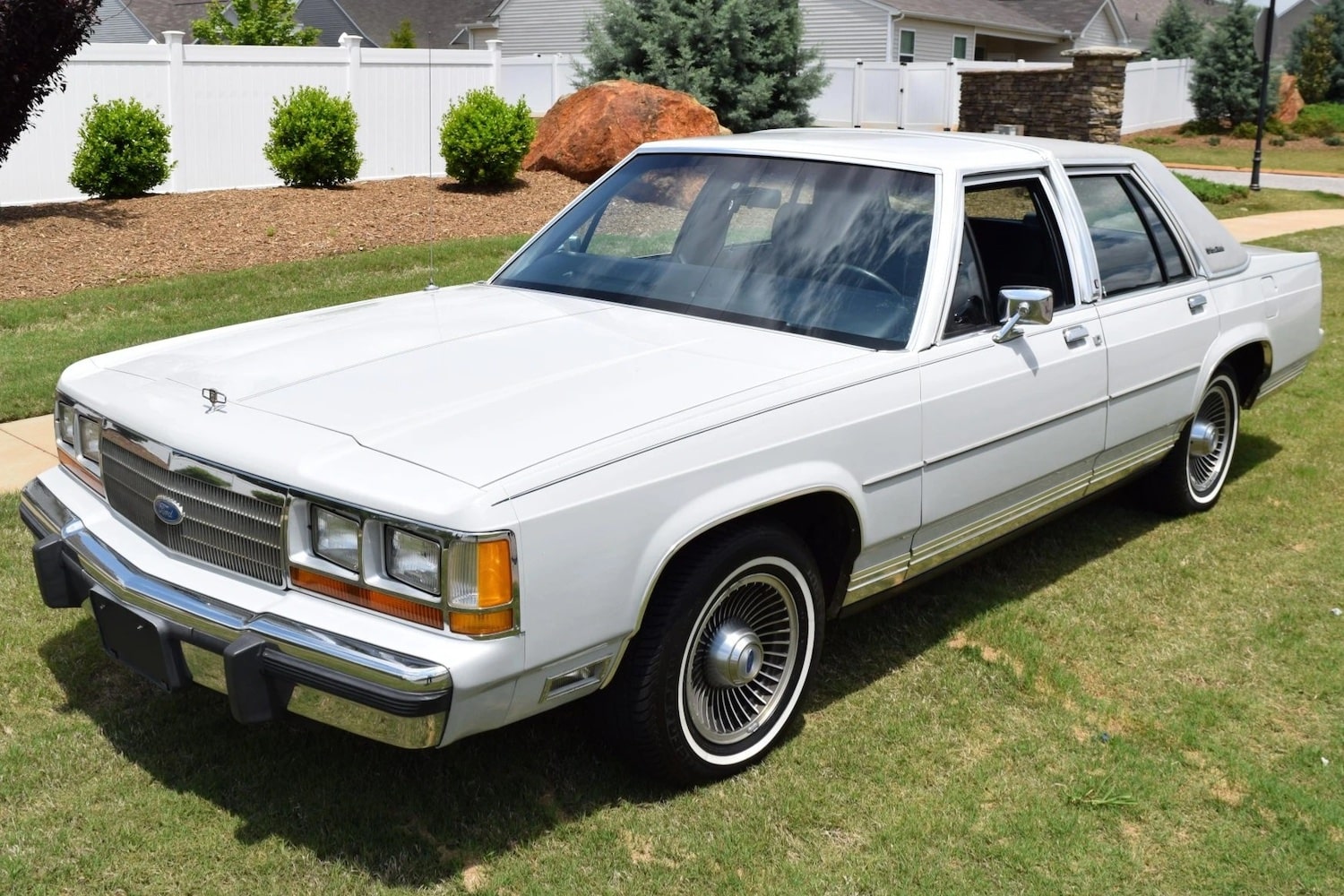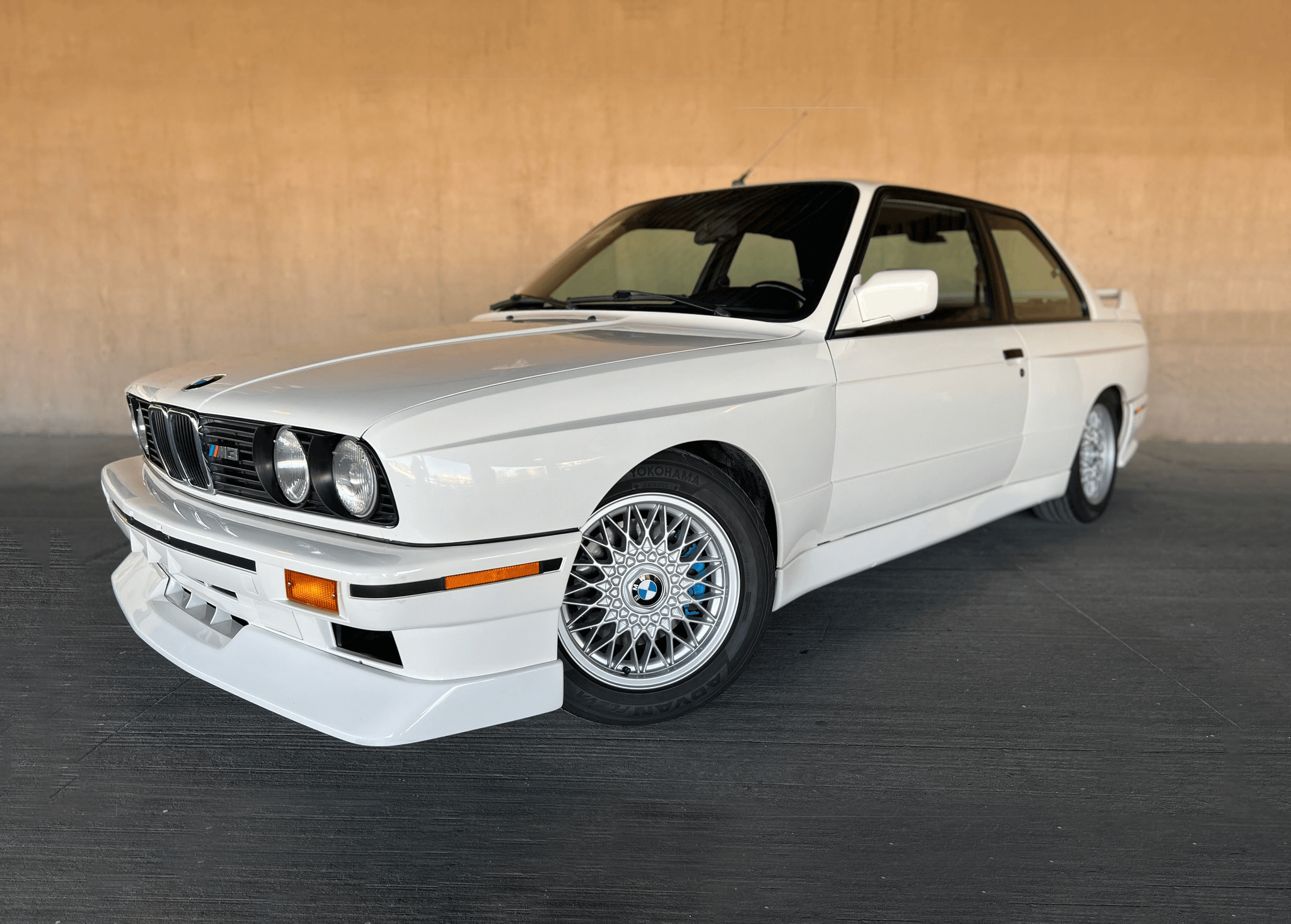1988 To 1999 Chevy Trucks For Sale: A Comprehensive Buyer’s Guide pickup.truckstrend.com
In the realm of used trucks, few generations command as much enduring respect and loyalty as the Chevrolet and GMC trucks produced between 1988 and 1999. Known affectionately by enthusiasts as the "GMT400" platform, these trucks represent a significant evolution in pickup design, blending modern aesthetics with legendary General Motors reliability. Whether you’re a seasoned mechanic, a first-time truck owner, or someone seeking a dependable workhorse or a customizable project vehicle, the 1988-1999 Chevy truck offers an compelling blend of affordability, parts availability, and rugged capability. This comprehensive guide will delve into everything you need to know about these iconic vehicles, helping you navigate the market and find your ideal classic Bowtie.
The GMT400 Legacy: Why These Trucks Endure
1988 To 1999 Chevy Trucks For Sale: A Comprehensive Buyer’s Guide
The 1988 model year marked a revolutionary redesign for Chevrolet and GMC pickups, introducing the GMT400 platform that would define GM trucks for the next decade. This generation replaced the long-running "square body" trucks, bringing a more aerodynamic body, a redesigned interior, and significant mechanical updates. For the first time, 4×4 models featured an independent front suspension (IFS) for improved ride quality, though heavy-duty 3500HD models retained a solid front axle for maximum durability.
What makes these trucks so enduringly popular today? Their reputation for simplicity, durability, and ease of maintenance is paramount. Built during an era when trucks were still primarily tools for work, they boast robust frames, reliable powertrains, and relatively uncomplicated electronics. This makes them highly appealing to DIY mechanics and those who value longevity over excessive technological complexity. Furthermore, their clean, timeless styling has aged remarkably well, contributing to their classic status and growing enthusiast following.
Key Models and Configurations
The 1988-1999 Chevy/GMC truck lineup offered a vast array of configurations to suit every need, from light-duty personal transporters to heavy-duty workhorses. Understanding the nomenclature is crucial:
- C/K Designation: "C" denotes a two-wheel-drive (2WD) vehicle, while "K" signifies a four-wheel-drive (4WD) vehicle.
- Weight Classes:
- 1500 (Half-Ton): The most common light-duty pickup, ideal for general use, light hauling, and everyday driving.
- 2500 (Three-Quarter-Ton): A heavy-duty option for more serious towing and hauling, often featuring stronger components.
- 3500 (One-Ton): The heaviest-duty pickup, designed for maximum payload and towing capacity, often available with dual rear wheels (dually). The 3500HD chassis cab, with its unique solid front axle, extended into the 1999 model year.

- Body Styles:

- Regular Cab: Two-door, single-row seating. The most traditional and often lightest option.
- Extended Cab (Club Cab): Introduced in 1988, these two-door (initially) or later three-door (starting 1996 for passenger side access) models offered limited rear seating or extra storage space behind the front seats.
- Crew Cab: Four-door, full rear seating, typically only available on 2500 and 3500 series trucks. Ideal for carrying multiple passengers.
- Bed Lengths:
- Short Bed: Typically 6.5 feet (78 inches). More maneuverable and popular for personal use.
- Long Bed: Typically 8 feet (96 inches). Essential for maximum cargo capacity and certain work applications.
- SUV Variants: While the focus is on pickups, it’s worth noting that the Chevrolet Tahoe (introduced mid-90s, replacing the full-size Blazer) and Suburban, along with their GMC equivalents (Yukon, Yukon XL), shared the GMT400 platform, offering similar powertrains and parts interchangeability.

Engines and Transmissions: The Heartbeat of the GMT400
The GMT400 trucks were powered by a range of reliable and proven powertrains, offering options for fuel efficiency, everyday power, or heavy-duty grunt.
Gasoline Engines:
- 4.3L V6 (LV1, L35 Vortec): A workhorse V6, initially with TBI (Throttle Body Injection) and later with CPI (Central Port Injection) and finally Vortec technology. Known for decent fuel economy and reliability, suitable for lighter-duty applications.
- 5.0L V8 (305 TBI, L30 Vortec): The smaller of the small-block V8s. Adequate for daily driving but often overshadowed by the 5.7L.
- 5.7L V8 (350 TBI, L31 Vortec): The quintessential GMT400 engine. The TBI (Throttle Body Injection) version (1988-1995) is famed for its simplicity and robustness. The later Vortec 5.7L (1996-1999) introduced improved cylinder heads and sequential fuel injection, significantly boosting horsepower and torque. This is arguably the most desirable gas engine for its balance of power, reliability, and parts availability.
- 7.4L V8 (454 TBI, L29 Vortec): The big-block option, available in 2500 and 3500 series trucks. Designed for maximum towing and hauling, offering immense torque. The Vortec version (1996-1999) also saw substantial power increases.
Diesel Engines:
- 6.2L Diesel: Primarily in early models (1988-1993). A naturally aspirated, non-turbo diesel known for decent fuel economy but limited power.
- 6.5L Turbo Diesel: Introduced in 1992, this turbocharged diesel offered more power than the 6.2L. While capable, it’s known for specific failure points, most notably the PMD (Pump Mounted Driver) and cavitation issues with the block if coolant is not properly maintained. A well-maintained 6.5L can be a reliable engine, but buyers should exercise caution.
Transmissions:
- Manual Transmissions:
- NV3500: A 5-speed manual, commonly found behind V6 and small-block V8s in 1500 and some light 2500 applications. Generally reliable.
- NV4500: A heavy-duty 5-speed manual, often paired with big-block V8s and diesel engines in 2500 and 3500 series trucks. Known for its strength and durability.
- Automatic Transmissions:
- 700R4/4L60/4L60E: Found in 1500 series and some light 2500s. The 700R4 (up to 1993) and 4L60 (1993) were hydraulically controlled, while the 4L60E (1994-1999) was electronically controlled. They are generally reliable but can wear out, especially if the truck has been used for heavy towing without proper maintenance.
- 4L80E: The heavy-duty automatic, found behind big-block V8s, diesel engines, and in most 2500HD/3500 models. Extremely robust and highly sought after for its durability.
What to Look For When Buying Your GMT400 (Practical Advice)
Buying a truck that’s 25-35 years old requires a diligent inspection. Here are key areas to focus on:
- Rust: This is the primary enemy. Check:
- Cab Corners and Rocker Panels: Extremely common rust spots.
- Wheel Arches/Fenders: Especially the rear.
- Bed Sides: Rust can form above the wheel wells and at the bottom edge.
- Frame: Inspect for excessive surface rust, but more importantly, look for structural rust or cracks, especially near suspension mounting points.
- Brake Lines and Fuel Lines: These can rust through, leading to dangerous failures.
- Engine:
- Leaks: Oil, coolant, power steering fluid. Check valve covers, oil pan, rear main seal.
- Noises: Listen for knocks, ticks, or unusual sounds.
- Smoke: Blue (oil), white (coolant), or black (rich fuel/diesel issue).
- Vortec Specific: Check for intake manifold gasket leaks (common), which can lead to coolant loss and misfires.
- 6.5L Diesel Specific: Pay close attention to the PMD (often relocated), fuel injection pump health, and coolant system condition.
- Transmission:
- Fluid Condition: Should be red and clear, not brown or burnt-smelling.
- Shifts: Test all gears. Should be smooth, without harsh jerks or excessive slipping.
- 4WD: Engage 4WD (Hi and Lo) and ensure it works correctly without binding or grinding.
- Suspension and Steering:
- Ball Joints and Tie Rods: Check for excessive play. Lift the front end and wiggle the wheels.
- Steering Box: Look for leaks and excessive play in the steering wheel.
- Bushings: Check control arm and leaf spring bushings for cracking or wear.
- Shocks: Look for leaks or excessive bounce.
- Brakes: Check for soft pedal, pulling, or grinding. Inspect rotors and pads. The ABS module (especially on early models) can fail, leading to an illuminated ABS light.
- Electrical: Test all lights, power windows, locks, radio, and HVAC system. Dashboards are notorious for cracking.
- Interior: Check for seat rips, headliner sag, and overall condition.
- Tires: Ensure even wear and sufficient tread.
- Documentation: Always ask for service records. A well-documented truck is usually a well-cared-for truck.
Maintenance and Ownership Considerations
Owning a GMT400 truck is generally a rewarding experience, thanks to their straightforward design and widespread support.
- Parts Availability: This is a huge advantage. Due to the massive production numbers and shared components across various GM vehicles, parts are readily available from dealerships, aftermarket suppliers, and junkyards, and they are generally affordable.
- DIY Friendliness: Most repairs and maintenance tasks are well within the capabilities of an average home mechanic, with a wealth of online resources, forums, and YouTube tutorials available.
- Common Issues (Beyond Rust):
- Fuel Pump: Located inside the fuel tank, a common failure point.
- Intake Manifold Gaskets (Vortec): Prone to coolant leaks.
- PMD (6.5L Diesel): Often overheats; relocating it to a cooler area is a popular modification.
- Dash Cracks: Almost universal due to sun exposure. Replacement covers or full dashboards are available.
- ABS Module: Can fail, causing the ABS light to illuminate.
- Door Pin/Bushings: Worn out, causing doors to sag.
- Modifications: The GMT400 platform is incredibly popular for customization, from suspension lifts and larger tires to engine swaps and performance upgrades. This means you might find trucks already modified, which can be a pro or a con depending on the quality of work.
- Insurance: Generally affordable due to their age and lower market value compared to new trucks.
Finding Your Ideal GMT400
- Online Marketplaces: Websites like Craigslist, Facebook Marketplace, eBay Motors, and dedicated automotive classifieds are primary sources. Be prepared to filter through many listings and act quickly on good deals.
- Specialty Forums and Groups: Enthusiast forums and Facebook groups dedicated to GMT400 trucks are excellent places to find well-maintained examples, as owners often sell to fellow enthusiasts.
- Local Dealerships/Used Car Lots: Less common for these older models, but occasionally a gem might appear.
- Word-of-Mouth: Let friends, family, and local mechanics know you’re looking.
Always, always arrange for a pre-purchase inspection by a trusted mechanic, even if you’re knowledgeable yourself. A fresh pair of eyes can spot issues you might miss.
1988-1999 Chevy Trucks For Sale: Estimated Price Guide
Please note that prices for these trucks vary wildly based on condition, mileage, engine, drivetrain (2WD vs. 4WD), body style, location, and overall market demand. This table provides a general range. Exceptional examples, highly modified trucks, or rare configurations (e.g., low-mileage Crew Cab 4×4 with a big block) can command significantly higher prices.
| Model Type | Year Range | Condition: Poor (Rust/Major Issues) | Condition: Fair (Runs/Needs Work) | Condition: Good (Solid Driver) | Condition: Excellent (Show Quality/Restored) | Notes |
|---|---|---|---|---|---|---|
| C1500/K1500 | 1988-1999 | $1,000 – $3,000 | $3,000 – $6,000 | $6,000 – $12,000 | $12,000 – $25,000+ | Most common. C1500 (2WD) generally lower priced than K1500 (4WD). Regular cabs are often cheapest. Extended cabs and later Vortec 5.7L engines command higher prices. High mileage is common. |
| C2500/K2500 | 1988-1999 | $1,500 – $4,000 | $4,000 – $7,000 | $7,000 – $15,000 | $15,000 – $30,000+ | Heavy-duty. Prices vary greatly based on engine (454/6.5TD often higher), transmission (4L80E/NV4500 desirable), and 4×4. Often bought for work or towing. Crew Cabs in good condition are sought after. |
| C3500/K3500 | 1988-1999 | $2,000 – $5,000 | $5,000 – $9,000 | $9,000 – $20,000 | $20,000 – $40,000+ | One-ton workhorse. Often dually. Highest towing/payload capacity. Crew Cabs are very popular and can fetch premium prices, especially 4×4. 454 big block or 6.5L Turbo Diesel are common. |
| 3500HD Chassis Cab | 1990-1999 | $2,500 – $6,000 | $6,000 – $10,000 | $10,000 – $20,000 | $20,000 – $35,000+ | Specialized heavy-duty. Unique solid front axle. Often found with utility bodies or flatbeds. Value depends heavily on mileage, maintenance, and the specific application it was used for. Less common for personal use. |
| K5 Blazer (Full-size) | 1988-1991 | $3,000 – $6,000 | $6,000 – $10,000 | $10,000 – $20,000 | $20,000 – $40,000+ | Two-door SUV. Shares platform with trucks. Values for these are on the rise due to collector appeal, especially clean, unmolested examples. |
| Tahoe/Yukon (2-Door) | 1995-1999 | $2,500 – $5,000 | $5,000 – $9,000 | $9,000 – $18,000 | $18,000 – $35,000+ | Two-door SUV version. Highly desirable due to styling and versatility. Values are climbing for clean examples, especially 4x4s with the Vortec 5.7L. |
Note: These are estimates for North American markets as of late 2023/early 2024. Local market conditions, economic factors, and the specific history of each vehicle will significantly influence the actual sale price.
Conclusion
The 1988 to 1999 Chevy and GMC trucks represent a golden era of American pickup manufacturing. Their blend of straightforward engineering, robust components, and timeless design has cemented their status as highly desirable used vehicles. Whether you’re in search of a reliable daily driver, a capable work truck, or a platform for a custom build, the GMT400 offers incredible value. With diligent research, a thorough inspection, and a clear understanding of their common characteristics, you can confidently find a well-maintained example that will serve you faithfully for years to come. These trucks aren’t just transportation; they’re a piece of automotive history that continues to prove its worth on the road today.
Frequently Asked Questions (FAQ) about 1988-1999 Chevy Trucks
Q1: Are 1988-1999 Chevy trucks reliable?
A1: Generally, yes. These trucks are known for their mechanical simplicity and robust construction. The 5.7L TBI and Vortec engines are particularly renowned for their longevity. However, like any vehicle of this age, reliability largely depends on previous maintenance and the current condition of wear items.
Q2: Which engine is best for a GMT400 truck?
A2: For gasoline, the Vortec 5.7L (L31) (1996-1999) is widely considered the best balance of power, efficiency, and reliability. The TBI 5.7L (1988-1995) is also very reliable but less powerful. For heavy towing, the Vortec 7.4L (454) is excellent. The 6.5L Turbo Diesel can be good but requires more specific attention to its common failure points.
Q3: What’s the difference between "C" and "K" models?
A3: "C" indicates a two-wheel-drive (2WD) model, while "K" indicates a four-wheel-drive (4WD) model. K models are generally more sought after and command higher prices due to their versatility.
Q4: Are parts hard to find for these trucks?
A4: Absolutely not. Parts availability is one of the biggest advantages of owning a GMT400 truck. Due to their high production numbers and shared components across various GM models (pickups, SUVs, vans), most parts are readily available from aftermarket suppliers, auto parts stores, and even some dealerships.
Q5: How much should I expect to pay for insurance on a GMT400 truck?
A5: Insurance costs are generally affordable for these older trucks compared to newer vehicles. Factors like your driving record, location, coverage type, and the specific model (e.g., 1500 vs. 3500) will influence the premium. It’s always best to get quotes from multiple providers.
Q6: Can these trucks be used for heavy towing?
A6: Yes, especially the 2500 and 3500 series trucks. The 454 (7.4L) big-block V8 and the 6.5L Turbo Diesel, paired with the 4L80E automatic or NV4500 manual transmission, offer substantial towing capabilities. Always check the specific truck’s Gross Vehicle Weight Rating (GVWR) and Gross Combined Weight Rating (GCWR) for its maximum capacities.
Q7: What’s the main difference between TBI and Vortec engines?
A7: TBI (Throttle Body Injection) engines (up to 1995) use a central fuel injector system mounted on top of the intake manifold, similar to a carburetor. Vortec engines (1996-1999) use sequential port fuel injection, with individual injectors for each cylinder. Vortec engines offer significantly more horsepower and torque, better fuel efficiency, and improved emissions due to their more precise fuel delivery.

